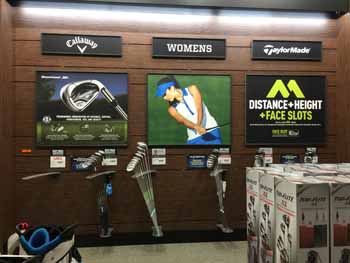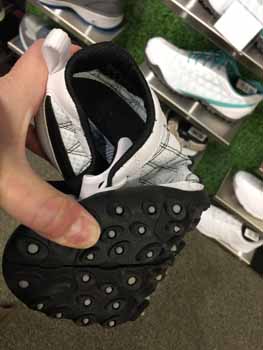How research will get more women playing golf at your club
In the second of a three-part series exploring what the golf industry can do to increase the number of women playing the game, Kari Haug details why research is of paramount importance when it comes to growing the women’s game, and explores the impact positive female role models and the equipment industry can play
What is limiting the growth of women’s golf? In part one of this series I looked at retrofitting a golf course to fit the women’s game. This second article will examine how asking the right research questions will help us design better golf courses for women and other shorter hitters. It will also look at how the presence of positive female role models impacts player retention; and finally, how the ability to find quality equipment fit for women can reduce difficulty of the game.

Increase research on women’s golf
With the exception of a couple of Syngenta-commissioned reports in the last five years – The Opportunity to Grow Golf: Female Participation and The Global Economic Value of Increased Female Participation in Golf, there is a significant lack of meaningful research on growing the participation rate amongst women golfers. Even the Syngenta-commissioned reports nearly exclusively focus on the recruitment half of the growth equation whilst high attrition rates may be equally or even more to blame for a lack of growth. Recruitment without good faith retention efforts will not convert women into loyal returning customers and the participation rate will continue to remain stagnant. The research questions that need to be asked should be crafted to find out why the game is difficult for women, why time or cost might be more of an issue for women and what issues affect female golfers that aren’t a factor for men.
I propose that if the right research questions were asked, light would be shed on issues deeper than market influences and would include golf course design playability barriers, equipment inadequacies and numerous other trivialised issues that alone may seem insignificant, but collectively make the game more difficult for women and create a highly impervious barrier to growing the game.

In preparation to write this and other articles, I did database searches for research on women’s golf. I found that scientifically rigorous research that asks the right questions of the right people is extremely limited. Research is critically needed to enable us to factually define and articulate issues with credibility, to defend positions, and to develop improved golf products, courses, equipment and golf experiences for women golfers.
Unidentified, silent, unscientific and trivialised problems are much more difficult to address than overtly recognised ones. I suggest that unless these problems are identified, given the proper gravity, talked about and taken action upon, they will remain lurking year after year and continue to contribute to stagnant growth in participation.
Increase the presence of female role models
In May 2010, women occupied less than two per cent of PGA club professional positions across the United States, and less than one per cent of executive leadership positions. Women occupied less than two per cent of golf course superintendent positions, golf course architect positions and club owner positions. These abysmal numbers appear to have spoken loudly enough to compel change, as we have seen some significant shake-up in the industry to be more gender-inclusive.
In 2016-17, we saw the election of Diana Murphy to a second term as USGA president, The R&A opened its doors to women and although Muirfield had a misfire on its gender policy, it later reversed its decision and allowed women to become members for the first time since its founding in 1744.
Despite the awakening, the continued low percentages of women in golf industry positions may continue to hold back growth potential because the lack of women at the decision-making table limits problem recognition, discussion and solution development from the female perspective. Furthermore, aspiring young female athletes and businesswomen are often still without club professional leadership, or golf business role models.
Increase access, selection and quality of women’s golf equipment, technical clothing and shoes
Another barrier that makes the game of golf more difficult for women to play is substandard golf equipment that emphasises fashion rather than function. It seems as if the focus of women’s equipment designers is on the hot new colours and feminine form of the equipment rather than how it will function. Only in recent years has women’s golf apparel been designed with ‘technical’ fabrics and comfortable cut, but availability of these garments is still limited.
When it comes to golf clubs and shoes for amateur women, accepted biomechanical principles are thrown out the door. Golf is a sport that requires balance and leverage. Women need shoes that are supportive and stable, not pliable rubber, and golf clubs should have enough strength in the shaft to impact the ball without bowing like a noodle, otherwise it is like hitting a golf ball with a fishing pole while wearing pink flip-flops.

A typical women’s golf shoe. Kari said: “The last / sole of the golf shoe needs to be moderately rigid to create a firm lever and base for the golf swing. A weak last / sole of the shoe allows the lever to easily break down, diminishing the ground reaction force, power generation and balance, and makes the game more difficult for women”
In addition to poorly designed and / or fit equipment, many clubs do not have a thoughtful purchasing agent for women’s equipment, which often leaves women golfers without equipment (or very limited choice) in the pro shop for gaining success on the golf course.
Poorly designed equipment, a lack of comfortable functional clothing, limited pro shop club fitting and limited product choice are barriers that make the sport more difficult for women to access and play, and may just contribute to attrition of the newly recruited female golfer.
The first part in this series can be found here:















Let me tell You a sad story ! There are no comments yet, but You can be first one to comment this article.
Write a comment